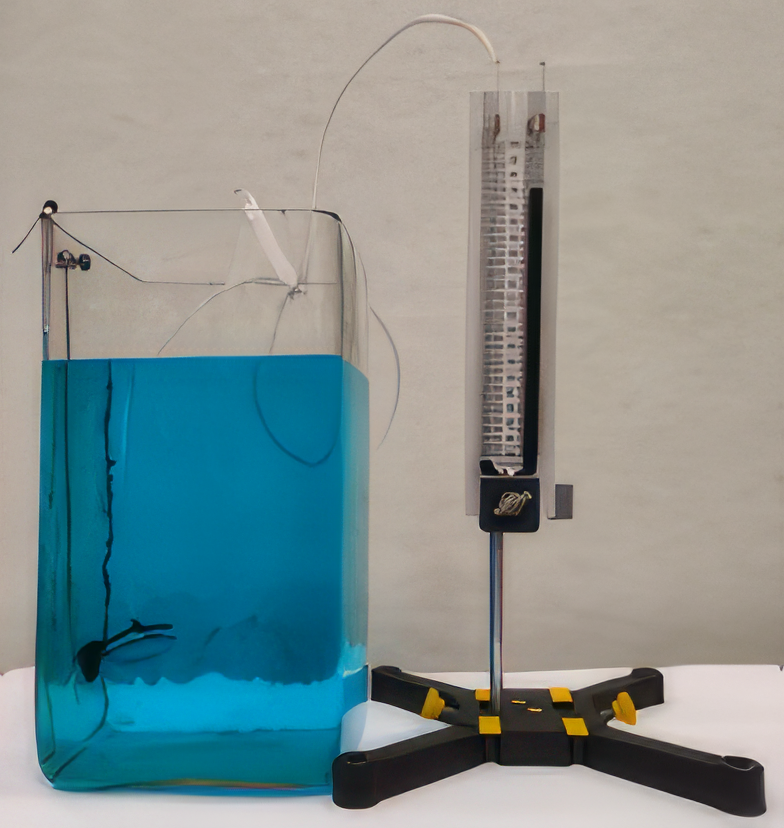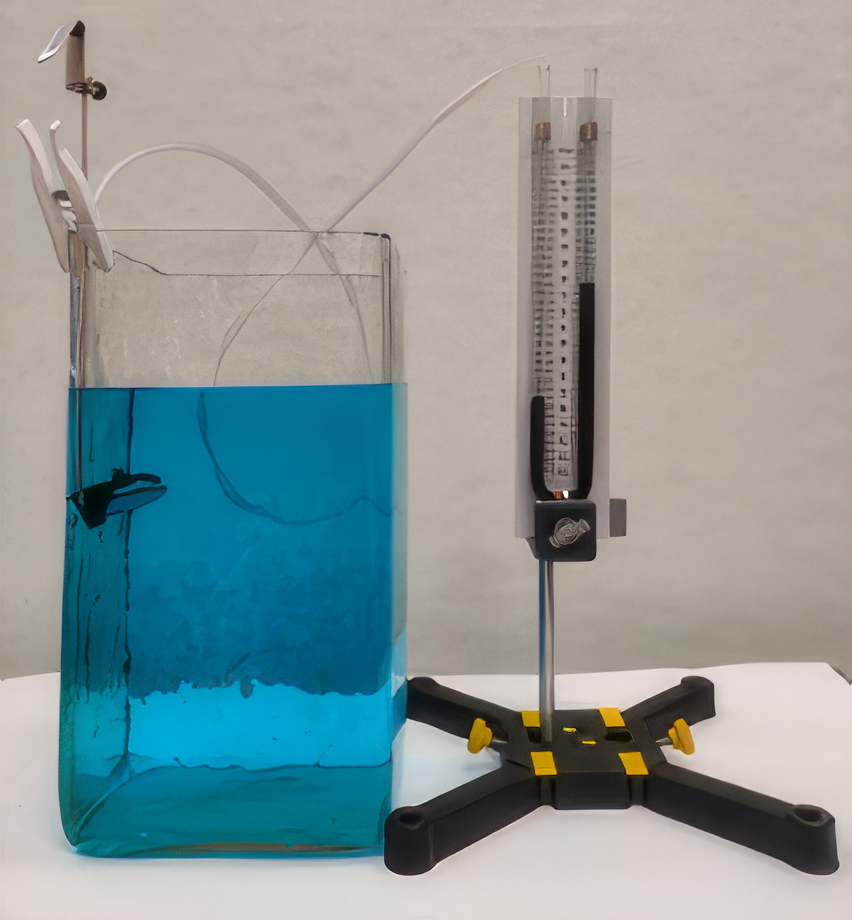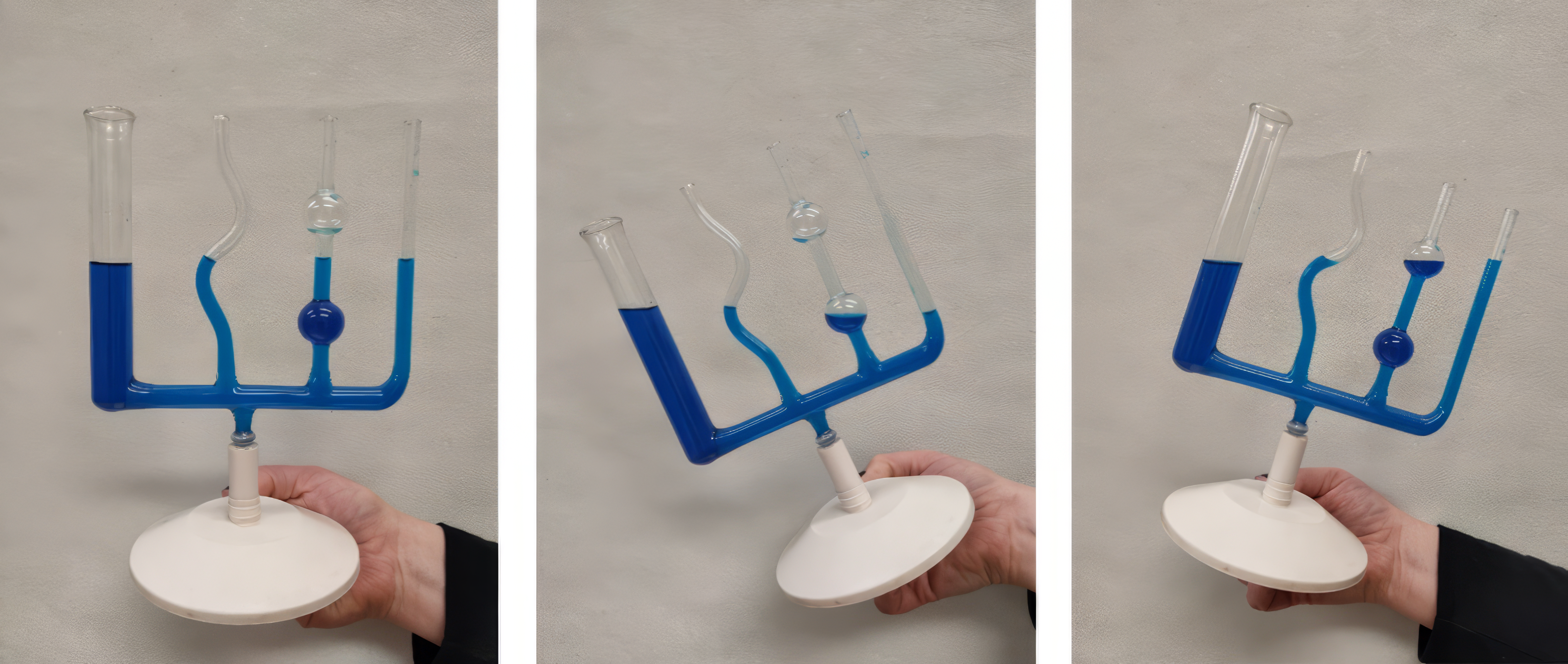Hydrostatic pressurePressure, in the physical sciences, the perpendicular force per unit area, or the stress at a point within a confined fluid. is the pressure in a stationary liquid due to its own weight. In incompressible liquids, the pressure increases in direct proportion to the depth.
The hydrostatic pressure depends only on the height of the liquid column and does not depend on the shape of the container.
This seemingly contradictory fact is known as the hydrostatic paradox.
Hydrostatic pressure also depends on the density of the liquid.
Figures show that the hydrostatic pressurePressure, in the physical sciences, the perpendicular force per unit area, or the stress at a point within a confined fluid. increases with the depth of coloured water.


In the animation below, pay attention to the height of the liquid level in the different shaped containers.
What happens to the water level in all the connected glass tubes?
We see that the water level in all connected glass tubes of different shapes is the same.
The pressurePressure, in the physical sciences, the perpendicular force per unit area, or the stress at a point within a confined fluid. in a given fluid is always the same at the same depth and does not depend on the shape of the container in which the fluid is held. The fluid is distributed at the same level in all parts of such a connected container. This shows that the pressure at the bottom of each container is the same. This fact is known as the hydrostatic paradox.



